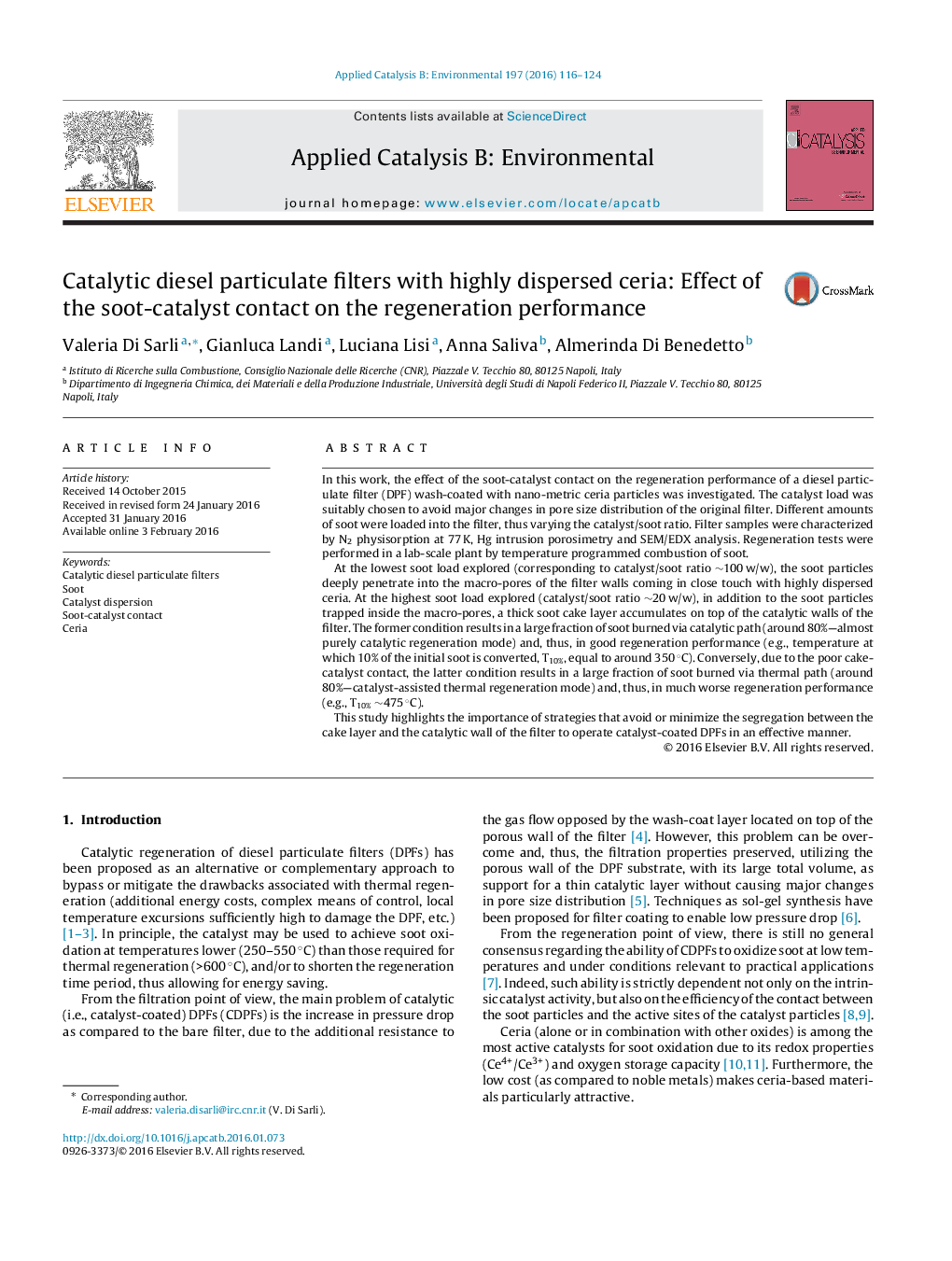| Article ID | Journal | Published Year | Pages | File Type |
|---|---|---|---|---|
| 45503 | Applied Catalysis B: Environmental | 2016 | 9 Pages |
•DPFs with nano-metric CeO2 highly dispersed inside the walls and different amounts of soot.•At high CeO2/soot ratio, soot and ceria in close contact inside the DPF macro-pores.•At low CeO2/soot ratio, poor contact between soot cake layer and catalytic wall of the DPF.•Improved regeneration performance with increasing CeO2/soot ratio.•Importance of avoiding segregation between cake layer and catalytic wall of the DPF.
In this work, the effect of the soot-catalyst contact on the regeneration performance of a diesel particulate filter (DPF) wash-coated with nano-metric ceria particles was investigated. The catalyst load was suitably chosen to avoid major changes in pore size distribution of the original filter. Different amounts of soot were loaded into the filter, thus varying the catalyst/soot ratio. Filter samples were characterized by N2 physisorption at 77 K, Hg intrusion porosimetry and SEM/EDX analysis. Regeneration tests were performed in a lab-scale plant by temperature programmed combustion of soot.At the lowest soot load explored (corresponding to catalyst/soot ratio ∼100 w/w), the soot particles deeply penetrate into the macro-pores of the filter walls coming in close touch with highly dispersed ceria. At the highest soot load explored (catalyst/soot ratio ∼20 w/w), in addition to the soot particles trapped inside the macro-pores, a thick soot cake layer accumulates on top of the catalytic walls of the filter. The former condition results in a large fraction of soot burned via catalytic path (around 80%—almost purely catalytic regeneration mode) and, thus, in good regeneration performance (e.g., temperature at which 10% of the initial soot is converted, T10%, equal to around 350 °C). Conversely, due to the poor cake-catalyst contact, the latter condition results in a large fraction of soot burned via thermal path (around 80%—catalyst-assisted thermal regeneration mode) and, thus, in much worse regeneration performance (e.g., T10% ∼475 °C).This study highlights the importance of strategies that avoid or minimize the segregation between the cake layer and the catalytic wall of the filter to operate catalyst-coated DPFs in an effective manner.
Graphical abstractFigure optionsDownload full-size imageDownload as PowerPoint slide
